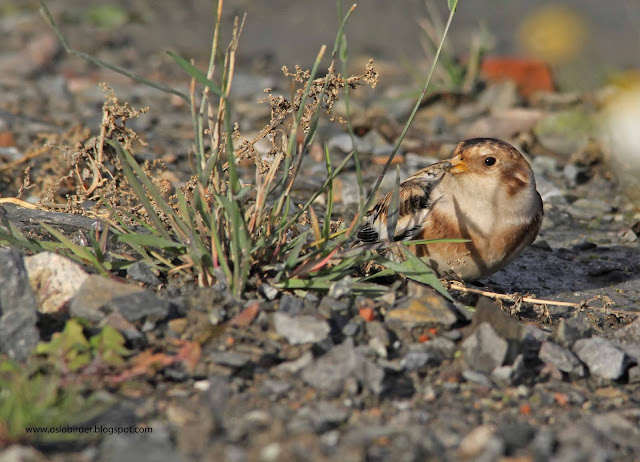Nice and sunny with no fog today so I thought I'd try for the hairy
titties again.
I found them and at times had them close, sometimes also with sun light
on them and also close enough to use the flash but am I happy with any of the
pics? Don't think so.
Behaviour wise though it was fascinating to watch them. I first found a
pair (or a at least a male and female that were keeping each other company) and
these two were quite noisy and flew around the reedbed. Sometimes also landing
in birch trees and engaging in high flying but always plummeting back into the
reedbed. On one of these high flyings they suddenly had the company of a third
bird and after plunging down they carried on calling and allowed me to find
them - a male had joined them. Whilst watching these three I could hear another
bird in the reeds and eventually a female joined them. All four birds were very
active and started go up a tree (never seen that before!) until they were all
at the top and then they launched themselves into the sky. After a couple of
rounds they headed towards Storøykilen.
I checked out Nansenpark where a single Meadow Pipit didn't quite meet up
to my expectations of a rare wheatear or shrike.
In Storøykilen everything was very quiet until after a long while I
heard a ping. The Beardies were here but they were hardly calling, feeding low
down out of sight and not interested in playback. I eventually confirmed 4
birds so they were presumably the ones from Koksa but their behaviour was so
different. Now they were settled and focused on feeding rather than seemingly
being more interested in finding a new location and other Beardies which their
behaviour in Koksa suggested was top of their minds earlier. If they are now
settled for the winter then they will become increasingly difficult to find
them but it is still early in the season and more birds may turn up and be
lively for at least the first few days post arrival.
Otherwise the Jack Snipe was still present and four Water Rails were
calling. One of them clearly got frightened by something in the reedbed because
it flew up squealing and perched in the reeds before again flying up in a noisy
panic and flying 15 m over the reeds before tumbling down. There was also a late(ish)
Reed Bunting which showed really well but why wasn’t it a rarer bunting?
Stopping to do grocery shopping on the way home gave me my first
Waxwings of the autumn and reminded me how much I like hearing their call. Let’s
hope there will be lots this winter.
 |
| male Bearded Tit (skjeggmeis) taken with superzoom using flash |
 |
| a female feeding on the ground |
 |
| always something between me and the bird |
 |
| and again a reed is in the way |
 |
| never seen Beardies in a tree before |
 |
| the four leave Koksa in the direction of Storøykilen |
 |
| the light was great in Storøykilen but the birds were far less cooperative |
 |
| although I did get a couple of close up opportunities |
 |
| and the Reed Bunting (sivspurv) |



















































